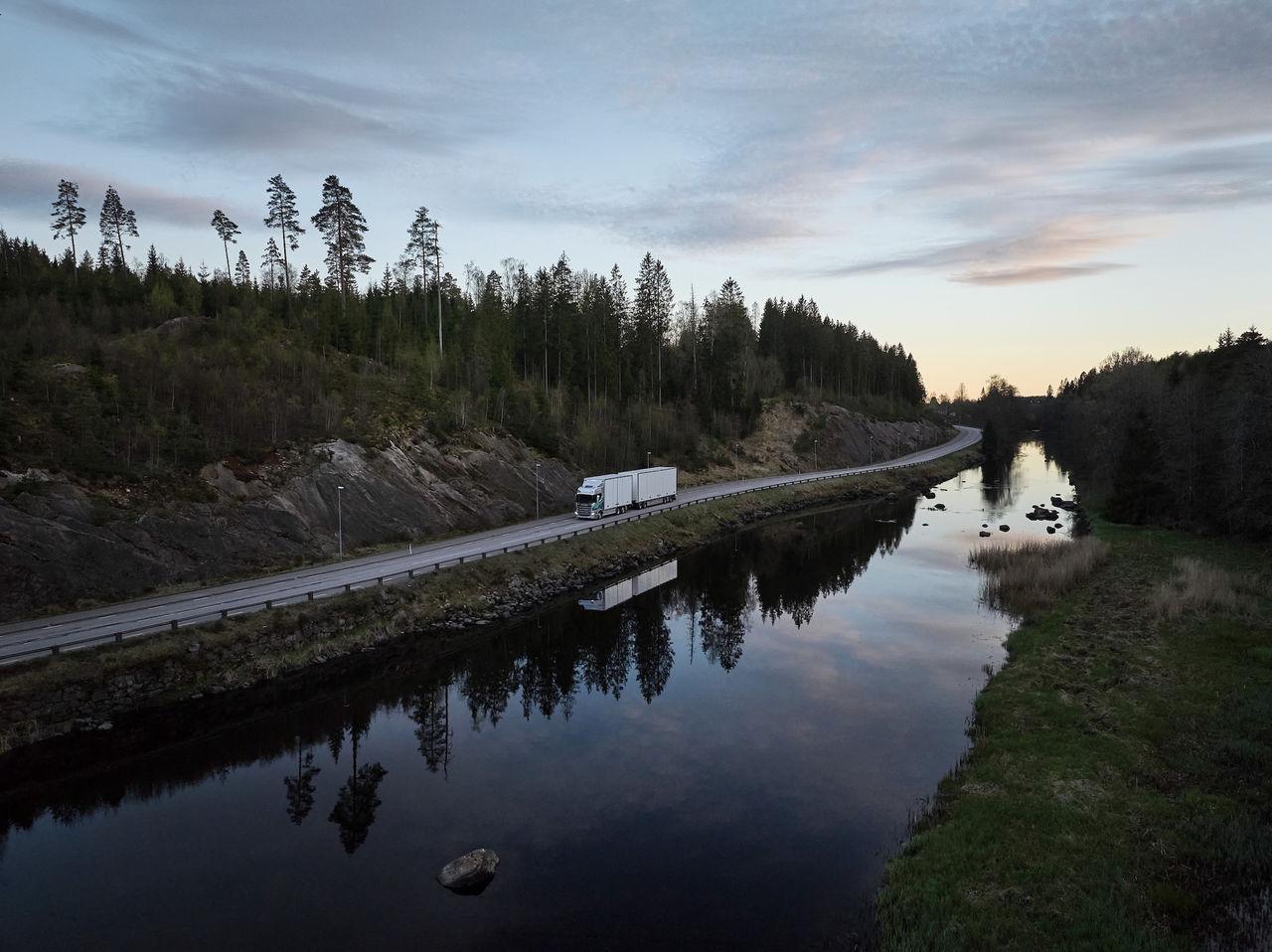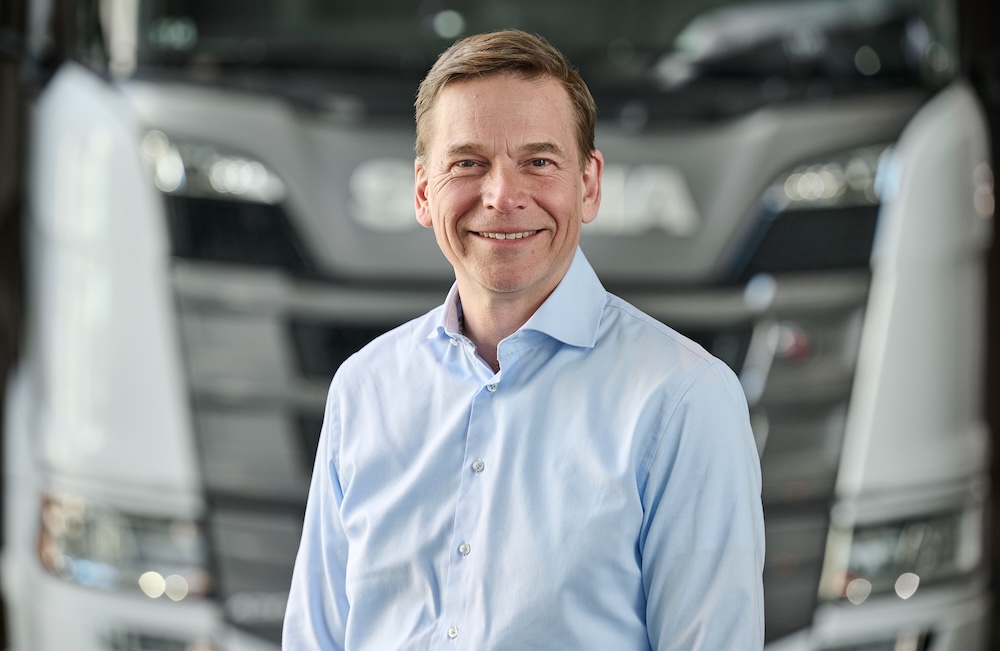
CEO comment - Third quarter 2025
Challenging market conditions weigh on profitability, while order intake improves in the third quarter.
2025-10-29
The third quarter of the year was marked by ongoing turbulence, with trade barriers, political unrest, and global conflicts impacting the global economy. These challenges continued to put pressure on market conditions, leading to investment hesitancy among our customers.
For Scania, sales revenue in the third quarter was affected by lower truck deliveries (unit sales), compared to the same period in 2024. We saw the sharpest decline in Brazil, where high interest rates, inflation, and tariffs slowed market momentum, and elevated dealer stocks put pressure on price. This development was partly offset by increasing truck deliveries in Europe and Asia.
Our sales revenue declined by 3 percent in the third quarter to SEK 46.9 (48.2) billion. Operating result (adjusted) fell by 26 percent to SEK 5.2 (7.1) billion, due to lower truck delivery volumes, currency headwinds, market mix and cost related to the build-up of the industrial hub in China. Consequently, the adjusted operating return on sales came in at 11.1 (14.7) percent, and adjusted for currency 12.5.*
Our service business continues to deliver stable, recurring revenue streams, with a growth of 7 percent in local currency in the third quarter. I’m especially pleased with the rollout of our modular services offering Services 360, which has already been well received by our customers across Europe. In our financial services business, the portfolio grew by 2 percent in local currency in the nine months of 2025 and more than a third of trucks sold are financed by Scania Financial Services.
Truck order intake rose sharply in the third quarter compared to the same period in 2024. The increase was underpinned by strong commercial activities and intensified sales efforts in some of our key markets, which helped secure orders and maintain customer confidence despite challenging market conditions.
Scania maintained a stable European market share of 17.9 percent (17.8) during the first nine months of this year, despite challenging conditions in a contracting heavy truck market.

“I believe that one of the best ways to make the case for electrification is to let people experience it for themselves.”
Christian Levin
President and CEO, Scania and TRATON Group
Safeguarding long-term competitiveness
New technologies, regionalisation and shifting market conditions are transforming our business landscape. To safeguard our long-term competitiveness, it’s vital that we adapt. As previously announced, we have initiated a global restructuring of our organisation to ensure we’re prepared for the future.
As a result of this restructuring, we had to issue a redundancy notice covering 750 positions in Sweden, across our People and Culture, and Commercial units. This was an extremely difficult decision, especially as we have been able to avoid such steps in the past. This time, however, it was necessary to strengthen our efficiency and ensure we keep delivering the best possible value for customers.
Super 11 rollout and electric truck roadshow
During the quarter we continued rolling out our new Super 11 engine, following its launch in May. The engine has already met with a great response from customers, and I’m excited to hear more feedback as the rollout continues. Positioned between our 9-litre and 13-litre Super engines, and delivering up to 7 percent better fuel efficiency than the 9-litre alternative, Super 11 meets a clear need, offering an attractive proposition for weight-sensitive operations.
Another truck segment highlight was the launch of our Europe-wide electric truck roadshow. Running from August through December, the roadshow will cover 13 European cities, giving customers a chance to experience our BEV truck portfolio and explore charging logistics first-hand.
At a time when many customers remain uncertain about the viability of electric heavy transport, I believe that one of the best ways to make the case for electrification is to let people experience it for themselves. By bringing our trucks directly to customers, media and other stakeholders, I’m hopeful the roadshow will help overcome doubts and convince everyone of the readiness of our solutions. But it is also about pushing for the enabling conditions essential for zero-emission transport, that our industry so urgently needs – from charging infrastructure to a competitive total economy for hauliers and transport buyer demand.
Exciting advances in people transport
In the people transport segment, Scania is broadening its customer offering. During the third quarter we launched an entirely new generation of bus and coach powertrains. Based on the Super truck engine, the powertrains come in internal combustion and newly introduced plug-in hybrid configurations, meeting diverse operational needs, improved fuel efficiency and compliance with zero-emission zones.
Demonstrating our commitment to the electrification of new market segments, we also launched our new high-floor BEV platform for buses and coaches. Unveiled at Busworld in October, the platform is tailored for both urban and travel segment applications.
At Busworld, we were proud to receive a Label of Excellence in the Busworld Vehicle Awards in the category Driveline Technology, Coach, for the Scania Irizar i6S Efficient PHEV. This recognition highlights the value our new plug-in hybrid electric powertrain delivers to customers, combining outstanding performance and efficiency with the ability to meet zero-emission zone requirements for long-distance operations.
Industrial battery business launched
In the latest step on our electrification journey, we announced the creation of Scania Industrial Batteries – a new offering focused on electrification solutions for off-road and industrial applications such as mining, construction and material handling. The organisation was formed following our acquisition of the industrial division of Northvolt Systems in April.
Off-road and industrial sectors are energy-intensive, and by providing reliable, easy to adopt electrification solutions designed for these environments, we can offer customers major energy efficiency cost savings as well as reducing their carbon emissions. At Scania, we’re committed to supporting all customers in making the transition to sustainable solutions, whatever their market or operating environment. I believe this is a great example of that commitment in action.
Looking ahead: China hub inauguration
As we look ahead to the next quarter, October was marked by a truly historic milestone for Scania, with the inauguration of our new industrial facility in Rugao, China. Rugao is much more than a factory – it’s a strategic innovation hub, based in an ecosystem that sets global benchmarks in digitalisation, smart manufacturing, electrification, and supply chain efficiency. We also have a dedicated R&D centre serving all TRATON Group brands, ensuring that the latest Chinese-originated innovations can be rapidly integrated into the TRATON modular system.
We have the right plans, the right people and the right solutions. Now, with our strategic investment in China established, Scania is even better prepared to own today and shape tomorrow.
Christian Levin
President and CEO, Scania and TRATON Group
*TRATON Group merged significant parts of the research and development departments of the individual brands into a cross-brand, group-wide research and development organisation, which was completed on June 30, 2025. There was also a change in the group management of TRATON Group, which has an impact on TRATON Group segment reporting. The change affects the expenses and intra-group income incurred in cross-brand research and development and used for segment reporting. As a consequence Scania Performance Summary is, as from 1 July 2025, according to TRATON Group segment reporting.